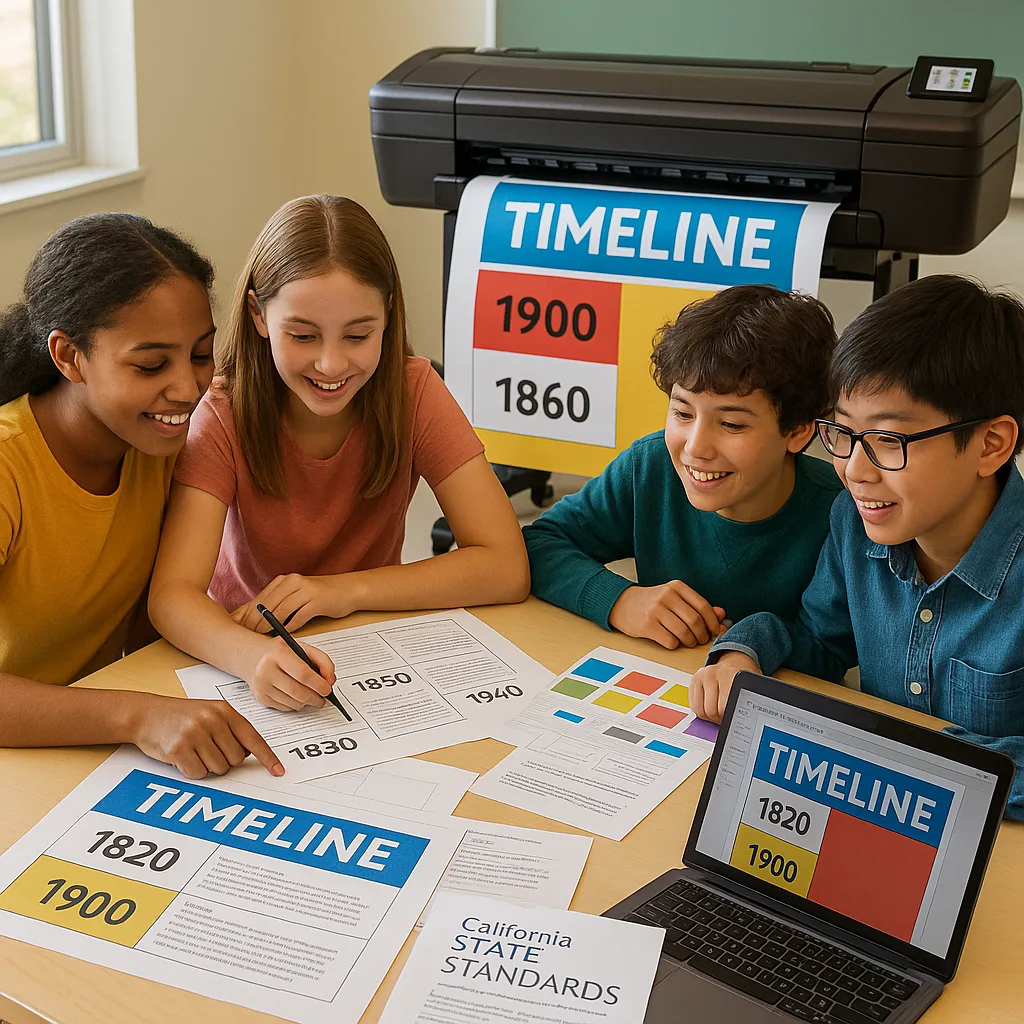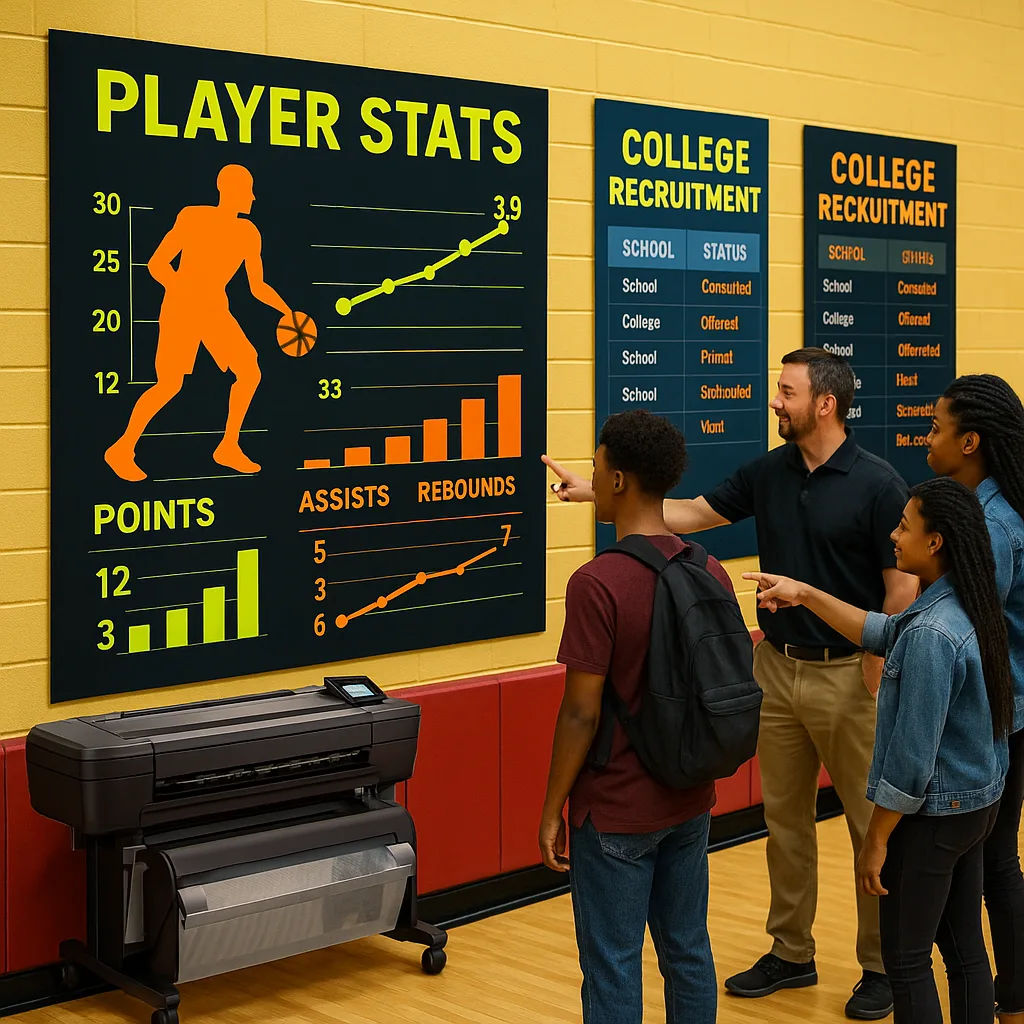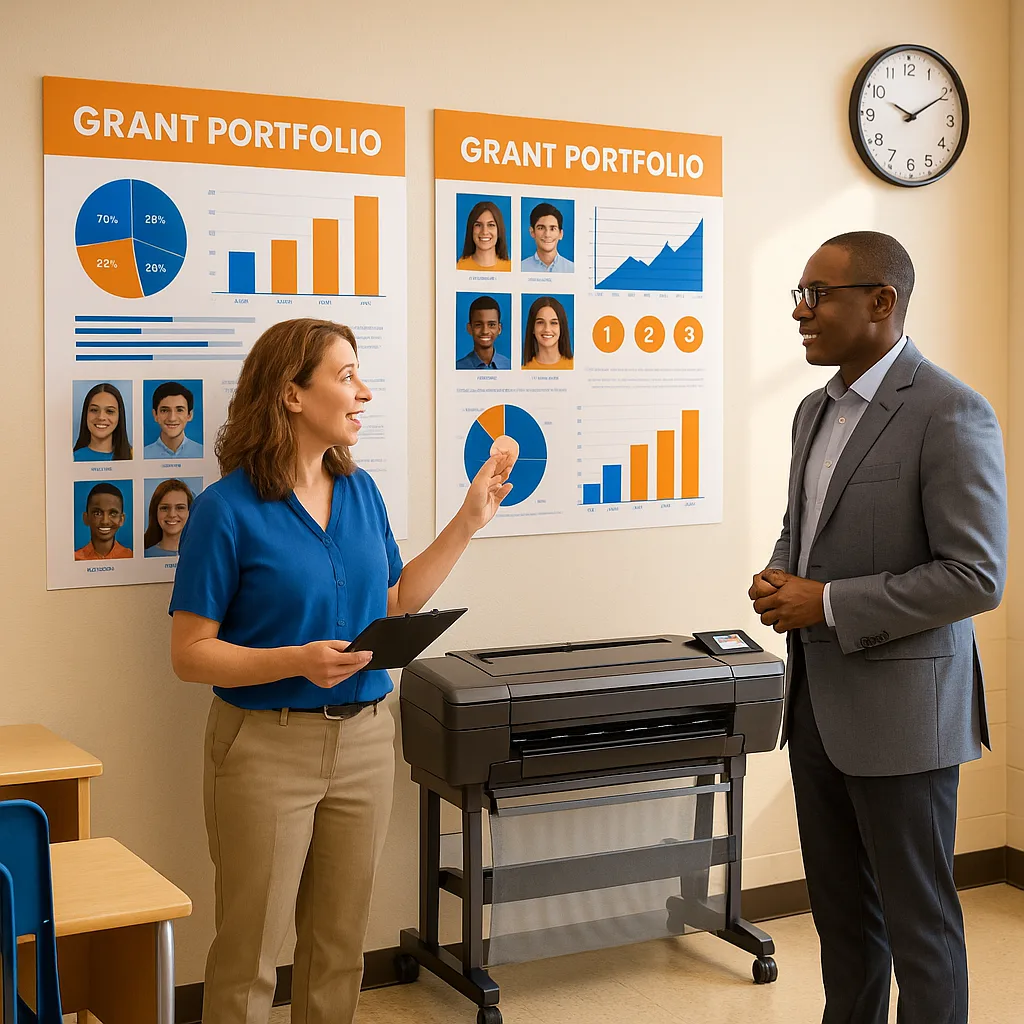
Walk through any California K-12 hallway during passing period, and you’ll witness a familiar scene: students rushing between classes, barely glancing at bulletin boards plastered with faded announcements. Now imagine those same corridors transformed into living history lessons—vibrant timeline murals stretching across walls, capturing pivotal moments from ancient civilizations to modern civil rights movements. This transformation isn’t just possible; it’s happening in forward-thinking schools that have discovered how poster printers machines for timeline murals can revolutionize both their physical spaces and their approach to social studies education.
Why Timeline Murals Matter in California’s Educational Landscape
California’s History-Social Science (HSS) Framework emphasizes the development of historical thinking skills and civic competence. According to the California Department of Education’s 2016 HSS Framework, students must “develop a keen sense of historical empathy and significance of the past in their own lives.” Timeline murals directly support this mandate by creating immersive, daily encounters with history that extend learning beyond the classroom.
Furthermore, the framework calls for inquiry-based learning that encourages students to ask questions, analyze sources, and construct arguments. When students collaborate to design and produce timeline murals, they engage in exactly this type of deep historical thinking. They must evaluate which events deserve inclusion, determine appropriate visual representations, and synthesize complex information into accessible formats.

Aligning Timeline Projects with California Standards
Creating standards-aligned timeline murals requires careful planning and curriculum mapping. Here’s how to ensure your corridor displays support specific grade-level expectations:
Elementary Alignment (K-5)
- Kindergarten: “Understanding Time and Chronology” – Simple before/after sequences
- Grade 2: “People Who Make a Difference” – Local heroes timeline
- Grade 3: “Communities Past and Present” – Community history progression
- Grade 4: “California: A Changing State” – Mission period through statehood
- Grade 5: “United States: Making a New Nation” – Colonial to Constitution
Secondary Alignment (6-12)
- Grade 6: “World History: Ancient Civilizations” – Mesopotamia to Rome
- Grade 7: “World History: Medieval to Early Modern” – 500-1789 CE
- Grade 8: “United States History: Growth and Conflict” – Constitution to WWI
- Grade 10: “Modern World History” – Enlightenment to present
- Grade 11: “United States History” – 20th century focus
Poster Printers Machines for Timeline Murals: Technical Considerations
Selecting the right equipment transforms ambitious timeline projects from logistical nightmares into manageable endeavors. California schools using poster maker for school timeline projects report dramatic improvements in both production efficiency and display quality.
Collaborative Design Process: From Concept to Corridor
Successful timeline murals emerge from structured collaborative processes that honor both academic rigor and student creativity. Based on best practices from California districts that have implemented corridor-scale history displays, here’s a proven workflow:
Equipment Solutions for Timeline Success
For schools serious about creating museum-quality timeline displays, the Education Studio 44 Poster Maker offers the perfect combination of size and precision. Its 44-inch width accommodates panoramic timeline sections while maintaining the detail necessary for text-heavy historical content. Additionally, the PostScript capabilities ensure accurate reproduction of maps, documents, and period artwork.
Schools needing even larger displays should consider the HP Latex 800 Printer, which produces weather-resistant prints up to 64 inches wide. This durability proves essential for high-traffic corridors where displays endure thousands of daily interactions.

Funding Strategies for Timeline Mural Projects
California schools can tap multiple funding streams to support timeline mural initiatives:
Title I Allocation
Schools with 65%+ low-income students can use Title I funds for engaging instructional materials
LCFF Supplemental
Timeline projects directly support English Learners through visual vocabulary development
CTE Perkins Grants
Graphic design and printing skills align with CTE pathways in Arts & Media
Best Practices for Durable, Engaging Displays
Creating timeline murals that survive the school year while maintaining visual impact requires strategic material choices and installation techniques. California educators who’ve successfully implemented corridor-scale history displays share these essential tips:
- Material Selection: Use heavyweight Satin Photo Paper for indoor displays. Its matte finish reduces glare under hallway lighting while the instant-dry coating resists fingerprints—crucial for displays at student height.
- Protective Lamination: Apply cold lamination using the PSE Cool 25″ Cold Laminator for sections within reach. This adds durability without the heat damage that can warp historical photographs.
- Modular Design: Create timeline sections in 36-48 inch segments. This allows for easy updates, repairs, or curriculum-driven rearrangements throughout the year.
- Interactive Elements: Include QR codes linking to student-created videos, primary source databases, or augmented reality experiences. Position these at ADA-compliant heights (48 inches maximum).
Assessment and Academic Impact
Timeline mural projects offer authentic assessment opportunities aligned with California’s emphasis on performance tasks. According to research from the WestEd History-Social Science implementation studies, students engaged in public history projects demonstrate 23% higher retention of chronological relationships compared to traditional instruction methods.
Districts can evaluate student learning through multiple lenses:
Technology Integration and 21st Century Skills
Modern poster maker for school systems integrate seamlessly with educational technology platforms. Students can design in Canva using drag-and-drop functionality, collaborate through Google Workspace, and print directly from Chromebooks. This workflow mirrors professional design environments while remaining accessible to diverse learners.
Furthermore, the lifetime design service provides expert support when student projects need professional polish. Unlike AI-generated content, human designers understand educational contexts and can ensure historical accuracy while maintaining visual appeal.
Implementation Timeline and Professional Development
Successful timeline mural programs require systematic implementation and ongoing support. Here’s a semester-based rollout plan aligned with California’s professional learning communities (PLC) structure:
Month 1-2
Foundation Phase
Equipment setup, teacher training on poster printers machines for timeline murals, curriculum mapping sessionsMonth 3-4
Pilot Projects
Small-scale timeline creation with selected classes, refinement of workflows, student feedback collectionMonth 5-6
Full Launch
School-wide implementation, showcase events, documentation of best practices for district sharingTransform Your Corridors Today
Timeline murals represent more than decorated walls—they embody active learning, student ownership, and community pride. With the right poster printers machines for timeline murals and pedagogical approach, any California school can transform sterile corridors into immersive historical experiences that inspire critical thinking and civic engagement.







